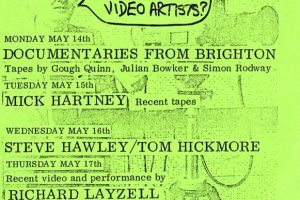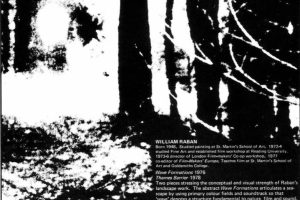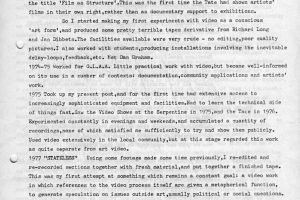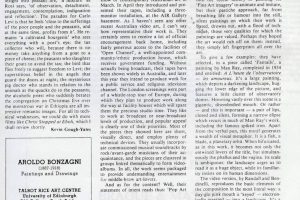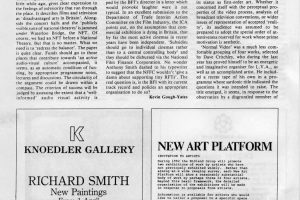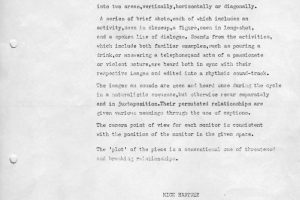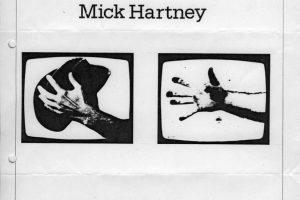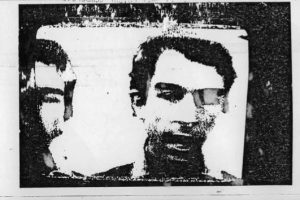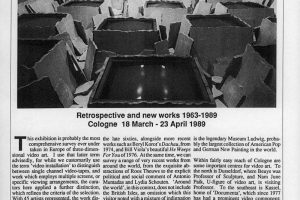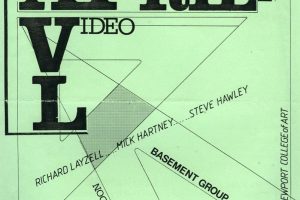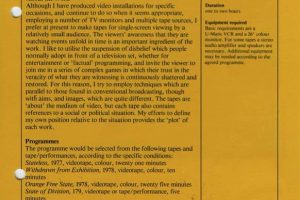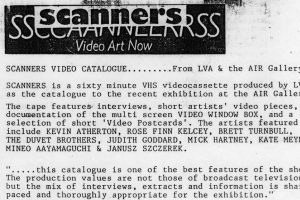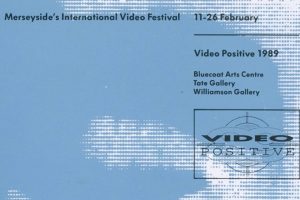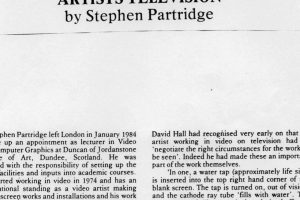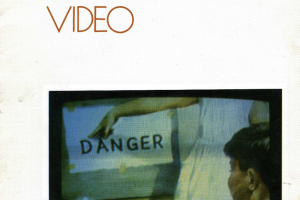Hartney, Mick
Mick Hartney is one of the first generation of video artists in the UK. He is also the first systematic chronicler of the medium, setting out the aesthetic and political territory of video art in influential articles such as: ‘An Incomplete and Highly Contentious Summary of the Early Chronology of Video Art (1959-75)’ (LVA Catalogue, 1984) and ‘After the Small talk; British Video Art in the Eighties’ (Video Positive Catalogue, Liverpool, 1989). Hartney is also author of a number of monographs on video and media artists including Nan Hoover and Jack Goldstein.
Hartney’s own practice has included works of a political nature including ‘Orange Free State’ (1978) in which issues of apartheid are alluded to in the juxtaposition of a black woman’s treatise on investments, economics and employment and a white man’s assumed superiority in his critique of her position. More personal works include the classic, ‘State of Division’ (1979) in which the artist is seen on a screen within a monitor screen describing the subjective experience of being the object of the spectatorial gaze. Over the years Hartney’s work has been shown internationally at major venues including the Pompidou Centre, Paris; The Kitchen, New York and the Tate Galleries in London and Liverpool.
He is currently Senior Lecturer in the School of Art at the University of Brighton.
– Catherine Elwes and Chris Meigh-Andrews (editors), 2006, ‘Analogue: Pioneering Video from the UK, Canada and Poland (1966-88)’, Exhibition Catalogue, EDAU Preston
-
Interview of Mick Hartney
View the interview transcript here
-
Videography:
1977
Stateless1978
Withdrawn from Exhibition
Orange Free State1979
Mixed Doubles
State of Division1980
A.M./P.M.
Anchored State
Implied Statement
Steady State1982
Dickler’s Whammy
State of Emergency1983
Between the Frames
Between the Lines1985
Legal Tender -
Artist works:
-
Artist assets:
-
Quotes:
Writer and artist Mick Hartney's assertion is that TV 'seduces rather than assaults'. In an attempt to outline the early British context, Hartney (1946-, UK) examined the implied 'symmetry of empowerment' implicit in Paik's [Nam June] previously quoted slogan ('TV has been attacking us - now we can attack it back') to one which suggests that with the advent of low-cost accessible video technology it would be possible to mount a counter-attack to broadcast TV. In Hartney's view the appeal of Paik's declaration was more emotional than logical. Paraphrasing Paik, Hartney proceded to sketch out the UK television broadcast situation.
Since the broadcast monopoly had effectively ceased in 1955 with the advent of commercial television, British telelvision in the 1960s was 'a seething arena of contending attitudes and cultures'. Moreover, Hartney points out that access for potential innovators was not possible: 'Ironically those who had the determination to force an entry, or the opportunity to apply or who had something oroginal to say or show, soon found that they were heaving against an open door.' "Mick Hartney (1996) 'InT/Ventions: Some instances of Confrontation with British Broadcasting', in Julia Knight (ed.) Diverse Practices, John Libbey Media/Arts Council of England, Luton, pp.22-3.
Chris Meigh-Andrews, A History of Video Art, The Development of Form and Function. Berg, 2006.




